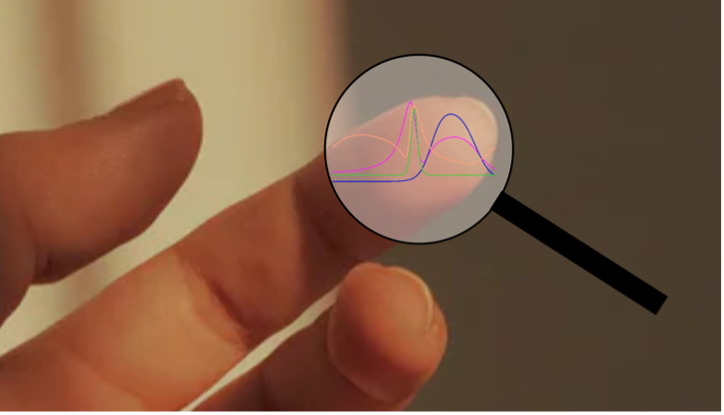Applying artificial intelligence techniques to modelling female hormones enables dancers and athletes to access hormone intelligence at her fingertips
Female hormone networks form the most complex aspect of the endocrine system. The menstrual cycle depends upon a delicate web of feedback mechanisms that trigger significant changes in hormone levels. This intricate physiological process generally operates reliably, but its timing and the hormone levels are affected by internal and external factors going on in a woman’s life. This is particularly relevant for female exercisers where there will be variability in terms of training load, competition/performance and nutritional intake which can all impact endocrine function. Furthermore, each woman’s endocrine response to these factors will be individual to her. This is why dynamic hormone monitoring can provide a sensitive, personalised training metric.
Menstrual tracking is a very good starting point to utilise menstruation as the barometer of internal hormone health. A free monthly health check. However, subtle hormone disruption can be missed. As discussed at the recent Female Athlete Conference[i], blood testing is the “gold standard” for measuring female hormones and the only way of measuring all four of the key female hormones in involved in the menstrual cycle: follicle stimulating hormone (FSH), luteinising hormone (LH), oestradiol and progesterone
As with any endocrine network it is important to measure the “full house” in terms of control and response hormones to identify the location and therefore potential cause for any underlying dysfunction. In the case of the endocrine network of the menstrual cycle this consists in practical clinical terms of the pituitary control hormones follicle stimulating FSH, LH and the ovarian response hormones oestradiol and progesterone. However, even if all these hormones are measured, the standard protocol of taking a blood test at one time point in the cycle, when these hormones are at their most quiescent, can miss subclinical menstrual cycle hormone dysfunction.
How can athletes understand the details of her female hormone network? As discussed at the Female Athlete Conference, in theory an athlete could take daily blood tests for the four key hormones: FSH, LH, oestradiol and progesterone. Clearly this is not practical, but it may be possible to use fewer blood tests over a cycle. During my talk on “Optimising the health and performance of female dancers: what are the challenges?” I outlined how machine learning, specifically Bayesian inference, can help by optimally combining test results with background information. This background knowledge includes medical understanding of hormone networks and the characteristics of the individual woman. Machine learning is “revolutionising healthcare”, as explained in the report from the Chief Medical Officer of England[ii]. It is an approach widely used in modelling biological systems[iii].
During my presentation, I discussed how it has recently become possible to create a personalised digital fingerprint of a woman’s menstrual cycle hormone network from just two finger prick capillary blood samples taken during a cycle. Machine learning combines deep medical and mathematical understanding of female hormone networks with the individual details of a woman’s menstrual cycle length, age and training load. Combined with a clinical medical discussion, this approach empowers each woman to adopt a personalised, effective and proactive approach to optimise her hormone health, and ultimately her athletic performance.
Clinical application of this new approach in assessing female hormone networks is proving a valuable clinical tool in the early identification of female athletes in low energy availability. In subclinical anovulatory cycles and luteal phase deficits, although a woman may experience regular menstrual periods, subtle mistiming of female hormones will not be detected with a routine single blood test. Yet this type of hormone disruption can have potential adverse consequences on health and risks progression to relative energy deficiency in sport (RED-S)[iv]. Early identification and prevention of RED-S is important for both health and exercise performance[v].
For older athletes and dancers, it is clinically important to distinguish between potential hypothalamic dysfunction occurring in low energy availability and reduced ovarian responsiveness of perimenopause. A blood test at a single time point or measuring ovarian hormones alone cannot reliably distinguish between these situations. Dynamic hormone network modelling can help.
Equally in the recovery from RED-S, as discussed at the Female Athlete Conference, there is no standardised protocol or monitoring. This is partly because the sensitivity and response of the female hormone network is individual to each woman. Also, because there are no practical and reliable ways of monitoring the dynamic response of the endocrine network to energy availability restoration. As a general guide, advising an athlete or dancer not to increase training and until 3 regular periods have returned is a practical approach. Having the evidence that these are indeed cycles with fully responsive hormone networks, or that full functioning has not been restored, provides personal detail that is helpful for both athlete and clinician to guide next steps.
Artificial intelligence[vi] is an important clinical tool to support the optimisation of personalised health and athletic performance.
Author and Affiliation:
Dr Nicky Keay (1,2)
Twitter: @nickykfitness
References:
[i] Female Athlete Conference 2021. Strategies for Health and Performance.
[ii] “Machine learning for individualised medicine” Mihaela van der Schaar, Annual Report of the Chief Medical Officer. 2018, Chapter 10. Health 2040 – Better Health Within Reach. Accessed 2021
[iii] Van de Schoot R, Depaoli S, King R et al. Bayesian statistics and modelling. Nat Rev Methods Primers 2021;1:1. https://doi.org/10.1038/s43586-020-00001-2
[iv] Keay N, Francis G Infographic. Energy availability: concept, control and consequences in relative energy deficiency in sport (RED-S) British Journal of Sports Medicine 2019;53:1310-1311.
[v] Keay N. Relative energy deficiency in sport (RED-S) British Journal of Sport and Exercise Medicine Blog 2018
[vi] Artificial Intelligence AI council. UK Government 2021